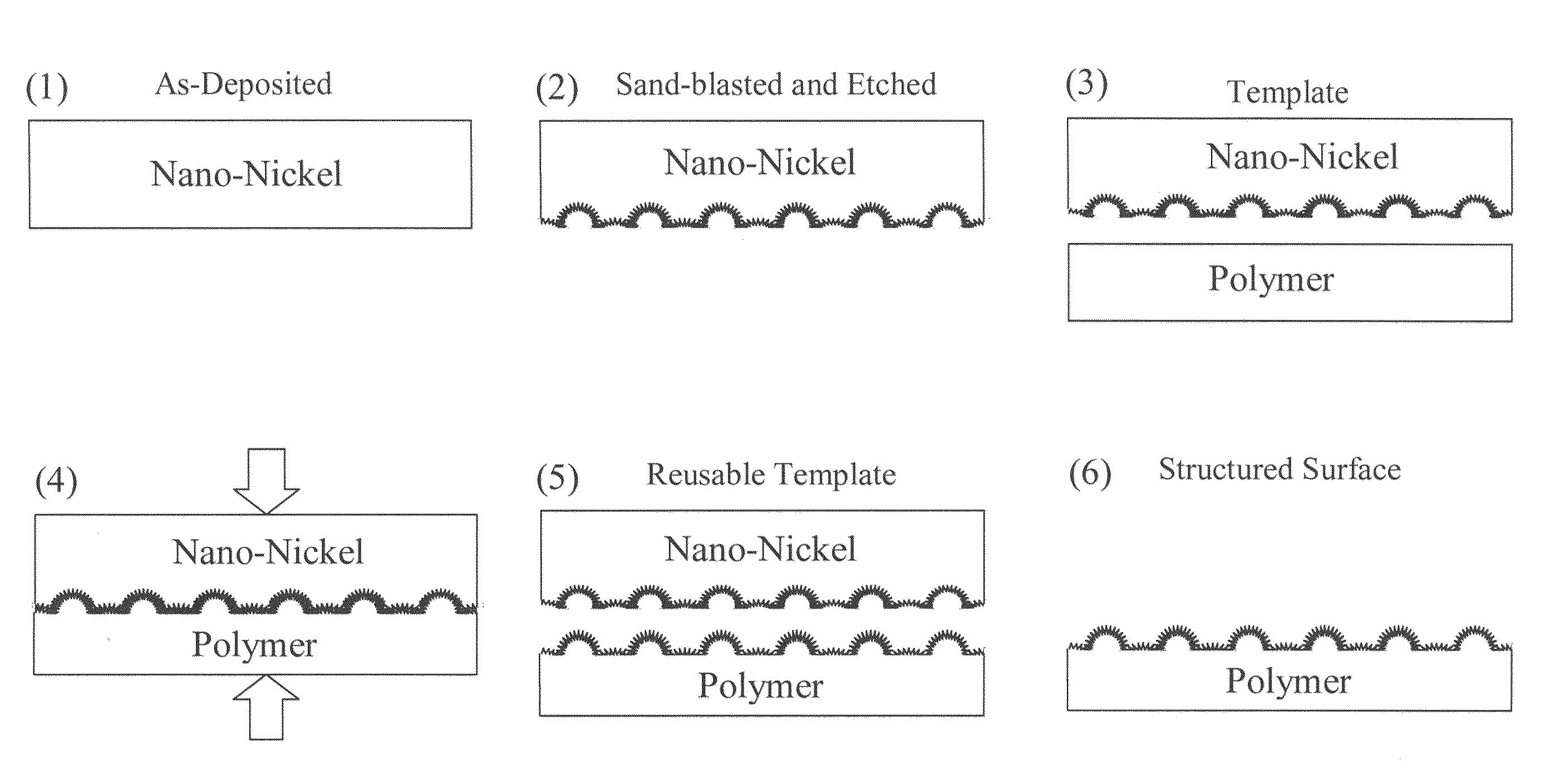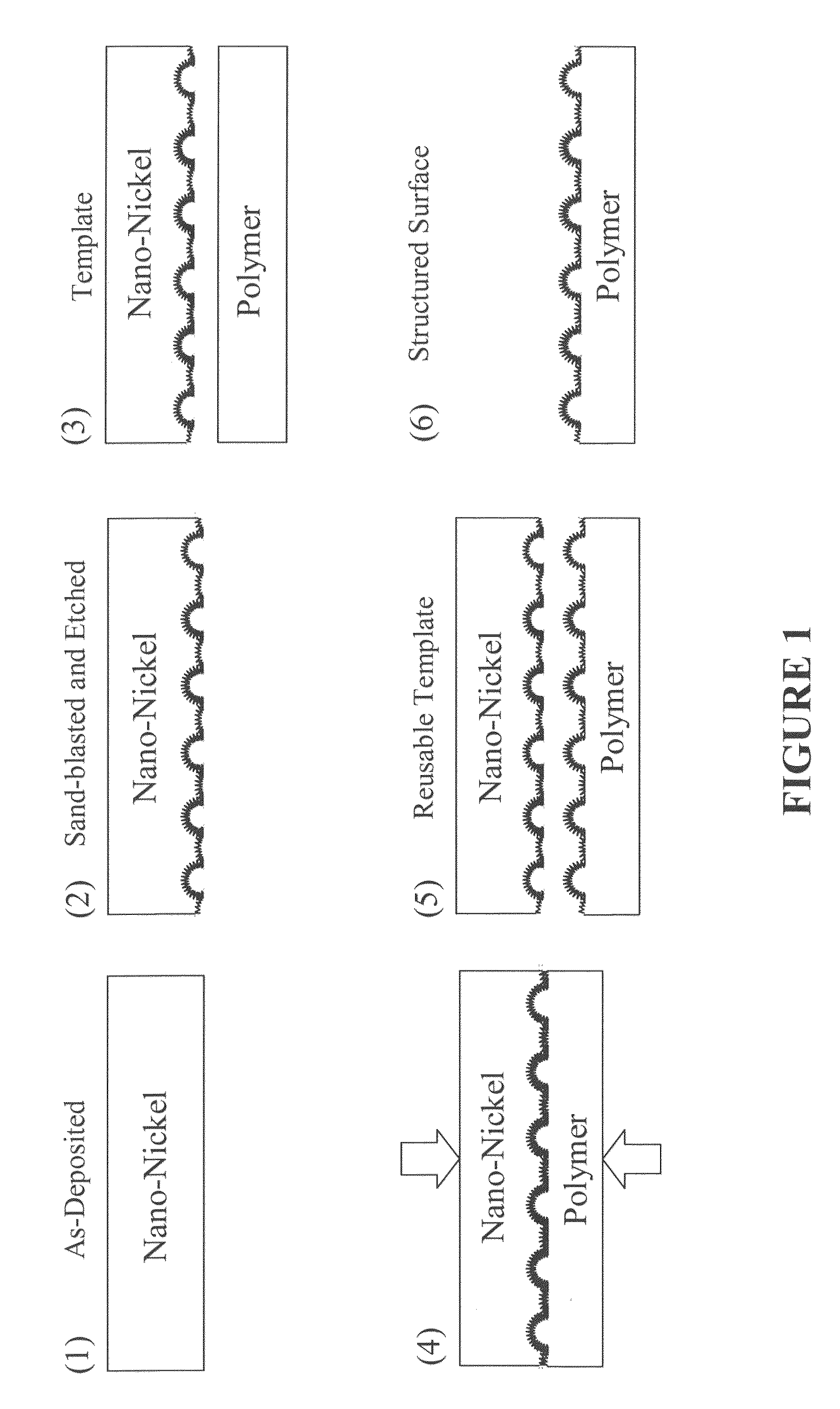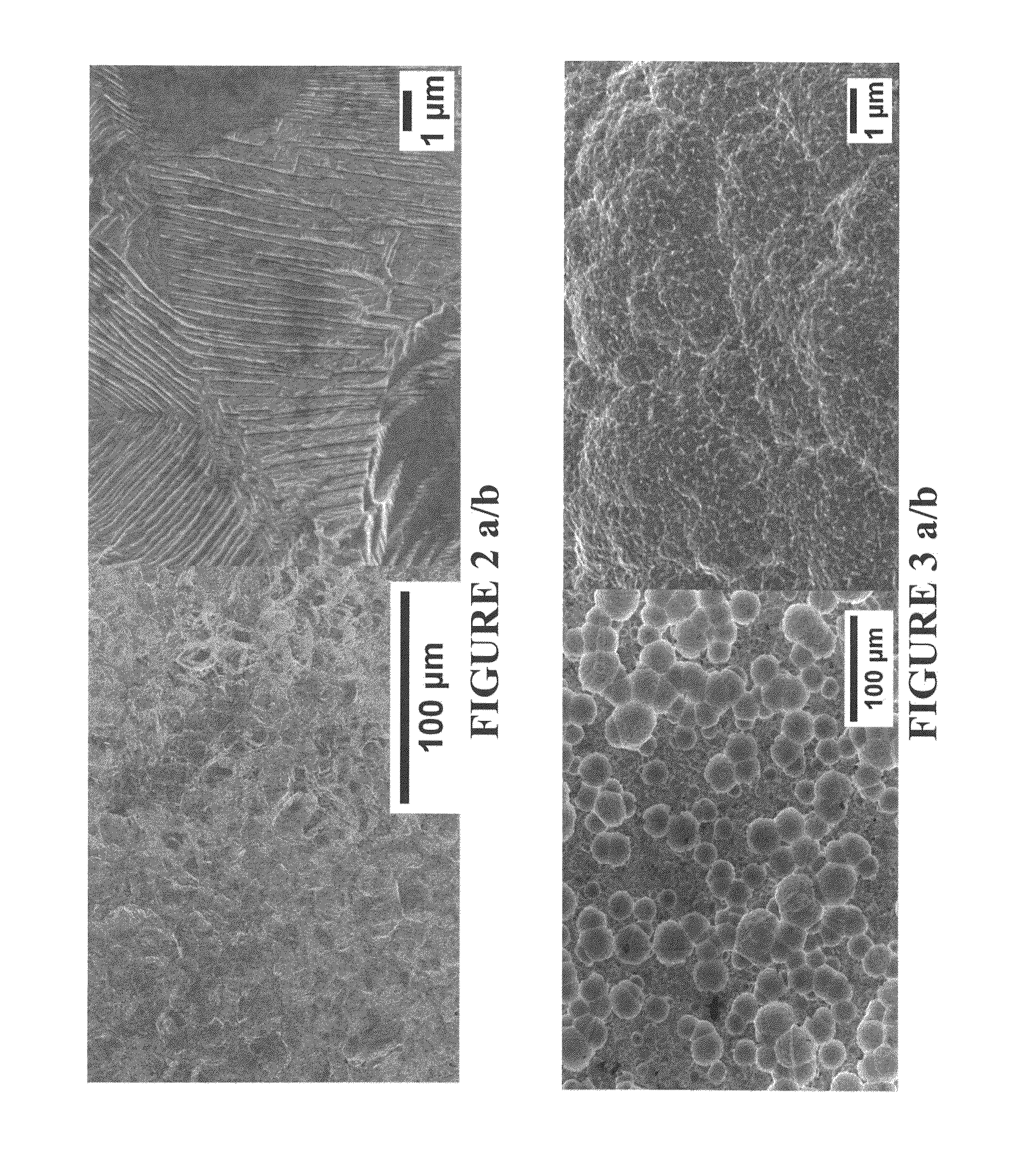Articles with super-hydrophobic and/or self-cleaning surfaces and method of making same
a technology of super-hydrophobic and/or self-cleaning surfaces, which is applied in the field of articles with exposed patterned surfaces and the field of making same, can solve the problems of cumbersome production of embossing dies, limited durability, and inability to adhere structure forming particles well to the surface, and achieve the effect of enhancing the desired size and population of surface structures
- Summary
- Abstract
- Description
- Claims
- Application Information
AI Technical Summary
Benefits of technology
Problems solved by technology
Method used
Image
Examples
working example
Comparison of Contact Angle and Tilt Angle of Polyethylene Imprinted with Various Coarse-Grained, Fine-Grained and Amorphous Embossing Dies
[0116]In this example, 10 cm×10 cm×0.25 mm metallic embossing dies were made from three different materials, namely, (a) coarse-grained Ni with an average gain size of 30 microns (prior art); (b) fine-grained Ni with an average gain size of 15 nm (this invention); and (c) amorphous Co-9P (this invention). Coarse-grained Ni was procured from McMaster-Carr (Aurora, Ohio, USA) in the form of cold rolled & annealed metal sheet. Fine-grained Ni and amorphous Co—P sheets were prepared according to U.S. Pat. No. 5,352,266, and copending application U.S. Ser. No. 12 / 785,520. The sheets are available from Integran Technologies Inc. (www.integran.com; Toronto, Canada), the assignee of the present application. Fine-grained metal matrix coupons and amorphous coupons were electroformed as described in U.S. Patent Publication No. 2005 / 0205425, also available f...
PUM
| Property | Measurement | Unit |
|---|---|---|
| grain size | aaaaa | aaaaa |
| grain size | aaaaa | aaaaa |
| contact angle | aaaaa | aaaaa |
Abstract
Description
Claims
Application Information
 Login to View More
Login to View More - R&D
- Intellectual Property
- Life Sciences
- Materials
- Tech Scout
- Unparalleled Data Quality
- Higher Quality Content
- 60% Fewer Hallucinations
Browse by: Latest US Patents, China's latest patents, Technical Efficacy Thesaurus, Application Domain, Technology Topic, Popular Technical Reports.
© 2025 PatSnap. All rights reserved.Legal|Privacy policy|Modern Slavery Act Transparency Statement|Sitemap|About US| Contact US: help@patsnap.com



